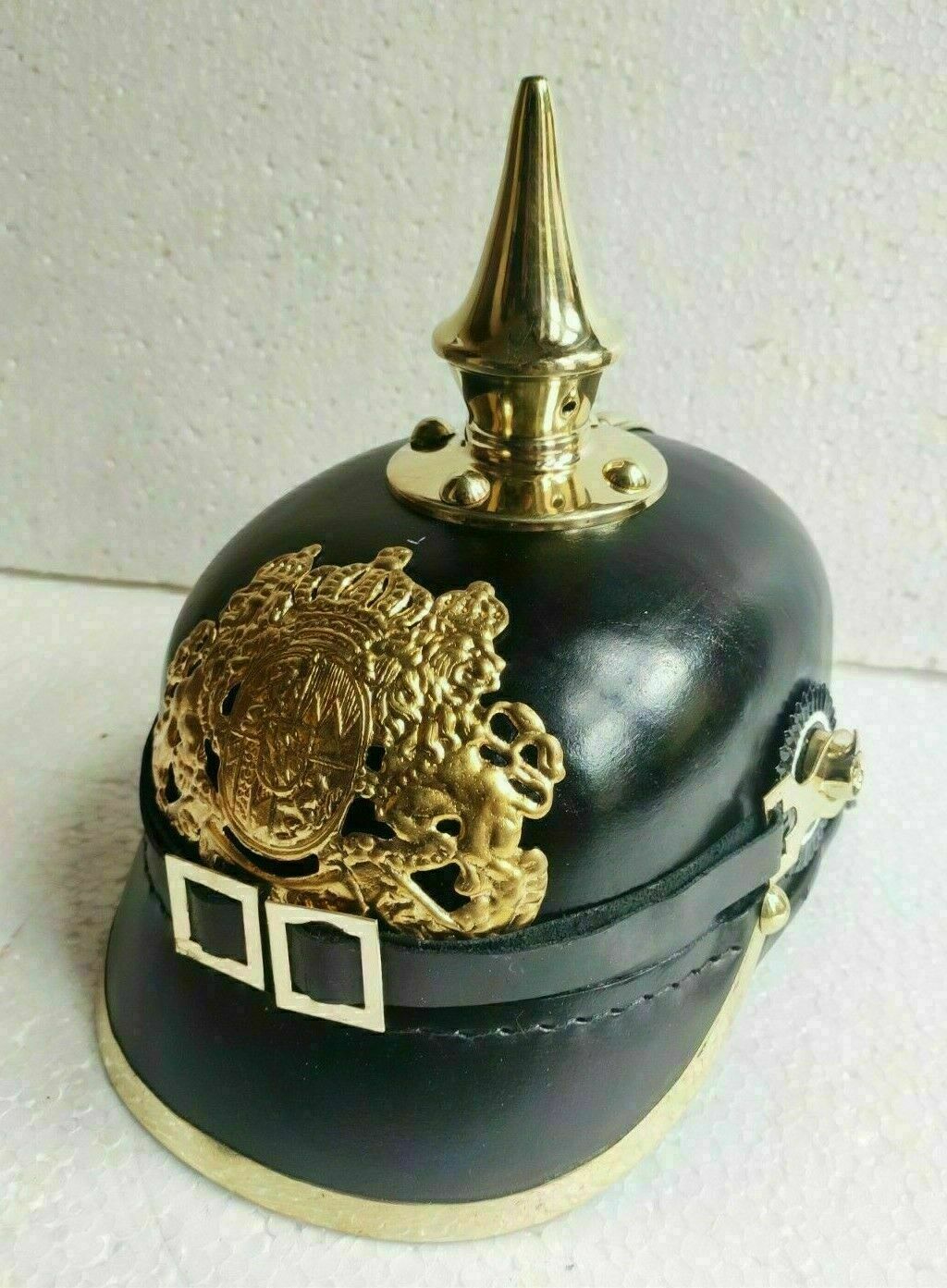-40%
Antique WWI Style Steel Combat Doughboy Shrapnel Helmet - Red
$ 31.02
- Description
- Size Guide
Description
Antique WWIStyle
Steel Combat Doughboy Helmet - Red
All I know about the helmet is that it is made of a solid but lightweight Steel - Painted Red inside and out. Smaller and lighter than most WW1 Helmets. Has a symbol on the front which I don't recognize. There is a paper tag inside which says "Hats Off to Edwards doughnuts."
One thought is the helmet was created for World War 1 as a toy and perhaps designed for children although it seems to fit adults with a small head.
Another possibility is it is
a British Civil Defense Helmet with the red paint likely indicative of use by a fire brigade.
WWI Style Steel Combat Helmet measuring 9 1/2” across by 10” from front to back.
Inside head area is 6 3/4" x 7 1/2"
with a height of approximately 4” from rim to top. Some Rust and small dents and scratches - see photos.
It
has no dome liner but has a cloth chin strap. Items in photos other than helmet are not included.
History of the Doughboy Helmet:
The Doughboy helmets were originally adapted from the British Brodie Helmet.
The Brodie helmet was a steel combat helmet designed and patented in London in 1915 by John Leopold Brodie. In modified form it became the Helmet, steel, Mark I in Britain and the M1917 Helmet in the U.S. Colloquially, it was called the shrapnel helmet, Tommy helmet, tin hat, and in the United States the doughboy helmet. Worn by Australians during WW2 and sometimes known as Panic Hat. It was also known as the dishpan hat, tin pan hat, washbasin, battle bowler (when worn by officers), and Kelly helmet. The US version, the M1917, was copied from the British Mk 1 steel helmet of 1916. The German Army called it the Salatschüssel (salad bowl). The term Brodie is often mis-used. It is correctly applied only to the original 1915 Brodie's Steel Helmet, War Office Pattern, although these
helmets were adapted for use by various nations.
United States
M1917: initially the United States purchased 400,000 British Mark I helmets to equip the American Expeditionary Force in 1917, and those units which were to integrate with French formations were provided with Adrian helmets. The first US made copies of the Mark I were supplied before the end of 1917 and some 2,700,000 had been made by the end of the war. The M1917 differed little from the British original; different rivets were used to secure the liner, the wire loop onto which the chinstrap was fixed was thicker and the rubber "doughnut" pad was not adopted. However, the US manufacturers were able to produce a shell with better ballistic protection than the original.















